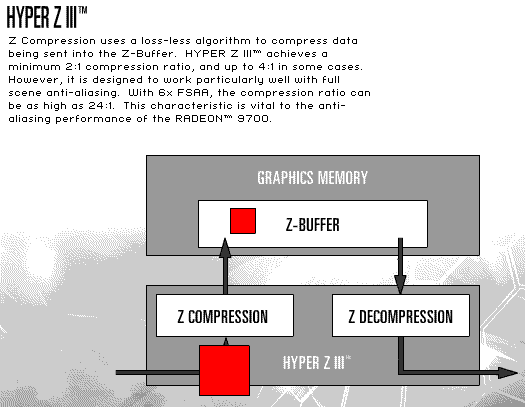Hi!
I used 3D-Analyze 1.63 and took a simple D3D8 SDK sample (DolphinVS) and tested ATi's different SMOOTHVISION 2.0 settings:
(memory usage for FSAA is only correctly displayed when you enable it in the driver panel, don't know why)
1024x768x32
2xFSAA 9MB
4xFSAA 18MB
6xFSAA 27MB
1600x1200x32
6xFSAA 66MB
Could someone test the memory req. on a GeForce 4 ?
Thomas
I used 3D-Analyze 1.63 and took a simple D3D8 SDK sample (DolphinVS) and tested ATi's different SMOOTHVISION 2.0 settings:
(memory usage for FSAA is only correctly displayed when you enable it in the driver panel, don't know why)
1024x768x32
2xFSAA 9MB
4xFSAA 18MB
6xFSAA 27MB
1600x1200x32
6xFSAA 66MB
Could someone test the memory req. on a GeForce 4 ?
Thomas

